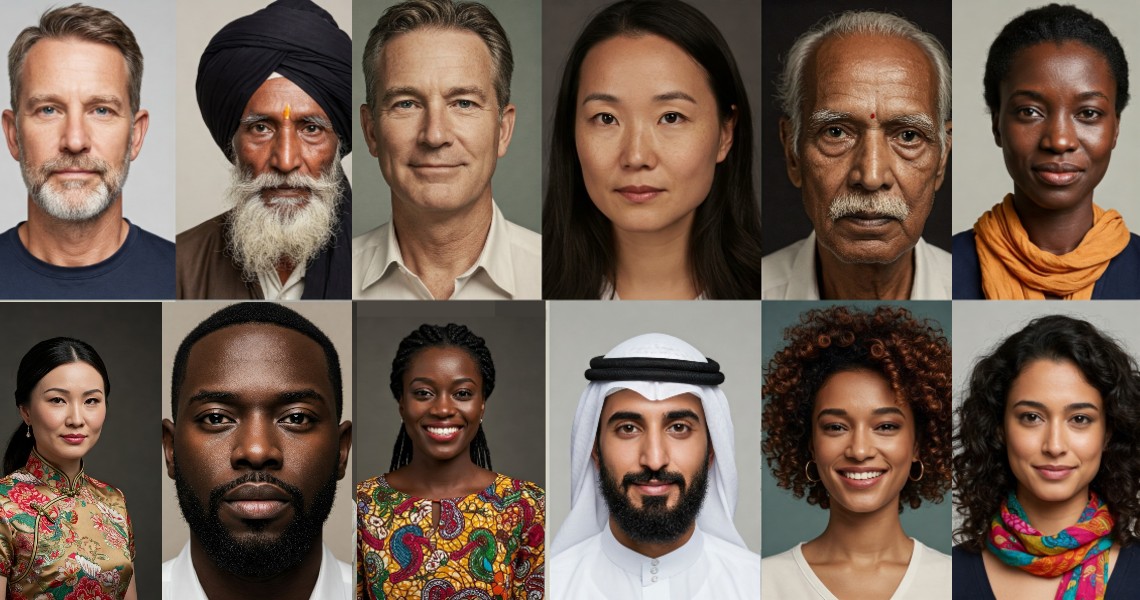AI – great but doomed to be biased
The data used to create AI systems comes from data created by humans. For instance, data from X (formerly Twitter), is used to feed into some of the algorithms used in AI chatbots like Chat GPT, Gemini and Grok. Of course, there are great things about X but if you’ve ever spent time on it, you know that there are also a great number of negatives.
This is not just specific to X, or even just social media, it is across the entire internet. Racist, sexist, xenophobic content is just some of the widely available material that we have become accustomed to.
So why wouldn’t AI be racist, sexist and xenophobic? If it is learning from such data, then it makes sense that it exhibits these attributes. There have been countless examples of AIs displaying bias or prejudice.
Examples of bias
In 2020, a facial recognition system incorrectly identified a black man in Detroit, USA as a suspect of a crime. He was accused of stealing watches and had to spend 30 hours in police custody. This was likely a result of the system being trained on data that didn’t have a good representation of black men, leading to inaccuracies.
In fact, many studies consistently show that facial recognition systems have a higher error rate for dark-skinned people when compared to those with lighter skin. For example, the 2018 Gender Shades study by Joy Buolamwini and Timnit Gebru.
Another example of AI bias is when Amazon abandoned a recruitment tool after it showed bias against women when reviewing applications for certain jobs. Due to the industry being dominated by men, as far as the AI was concerned, men were the better applicants. So applications from women were being penalised.
Even in seemingly harmless tools like AI chatbots, there is a bias which in some cases, perpetuate stereotypes. For example, if you request a photo of a pilot, and AI image generator will most likely generate an image of a white, male pilot. The reason for this is because pilots are predominantly white men. Only 5% of pilots are women.
In this case, the AI is working as expected. But there is an ethical consideration of whether showing a white male pilot 100% of the time, when a pilot is requested, perpetuates the idea that only white males can be pilots. Generating an African or Asian woman when requested for a pilot is equally contestable, given the current pilot demographics. Like most things, the solution is not straightforward. Multiple things have to be taken into account history, statistics, context and ultimately the goal, whatever that may be.
How can bias be removed?
Attempts to correct for bias have resulted in less than satisfactory results. Infamously, Google, via its Gemini chatbot, generated inaccurate images whilst trying to remove bias and make their results diverse.
A request for the founding fathers of the USA would produce a black women wearing something that George Washington would have worn in the 1700s. In some cases, the chatbot flat out declined requests to generate photos of white males.
Google apologised and paused the image generator. They acknowledged that they had overcompensated for bias. Despite Google’s epic fail in addressing bias, there is a lot of research into bias and a lot of researchers are constantly working on how to resolve it.
Unbiased data will address the problem but it does not seem like this is something realistic. As already mentioned, humans are biased, therefore our data is biased. And so the machines we create from this data will be biased. We can identify some of these biases and correct them, but we can’t correct all of them.
Even if we could correct them all, who would do the correcting? Certainly not the big technology companies like Google and Apple, we don’t even trust them. They’ll just add in their own biases. All this makes bias in AI, in my view, inevitable. But is there another way?
Moving away from human data
I listened to an interview of David Silver, from Google DeepMind, who was one of the AI researchers behind the breakthrough game-playing AI AlphaGo. In it, he suggests that we need to move beyond human data.
The idea is that rather than providing the AI with human data, you simply give it a goal. The AI then learns through reinforcement learning, trial and error. It gets rewarded for when it does the right thing and therefore learns this way. This is not new though. In fact, some of the techniques he discusses were used in the development of AlphaGo.
There are many benefits to reinforcement learning, not least the removal of bias in the data. Moving away from human data removes all the biases that are stored in this data. This temporarily made me optimistic about removal of bias in AI.
Final conclusion
Unfortunately, it doesn’t remove all bias. There is still a goal that is decided by humans. The environment also has to be set up by humans. Of course, in a game, like chess, the goal and environment are not really biases as such and so this works fine. But in more general areas, this bias is problematic.
Regardless, it is still a lot of bias reduction by not using data from humans. However, I think there must be a special kind of exploration or learning that is yet to be discovered. Where AI builds on the world knowledge on it’s own. Through trial and error, but not needing humans to guide it. Only then could it solve general problems and usher us into new frontiers. Like the numerous geniuses we’ve had over the centuries.
Until then, my view is that AI bias is inevitable. It doesn’t detract from the great changes the technology will cause but the bias may manifest itself in a worse way than anticipated. Whilst there has been a lot of talking and conferences around AI bias, it remains to be seen how bias will be removed successfully from the systems, going forward.



